The Ustaše brutalized and massacred upwards of 300,000 Serbians, 30,000 Jews, and 29,000 Romani people throughout their four-year reign of terror in Croatia.

Wikimedia CommonsUstaše founder and leader of the Independent State of Croatia, Ante Pavelic, gives the Nazi salute.
“The KNIFE, REVOLVER, MACHINE GUN and TIME BOMB; these are the idols, these are bells that will announce the dawning and THE RESURRECTION OF THE INDEPENDENT STATE OF CROATIA.”
— Ante Pavelic, writing the first editorial in the Ustaše newspaper, 1931.
When the government of Croatia held its annual Holocaust Remembrance Day ceremonies in 2016 and 2017, there was a conspicuous absence at the events: representatives from the Croatian Jewish community.
For two years running, the small Jewish community in Zagreb, Croatia, has boycotted the ceremony in protest of the government’s tolerance for ultranationalist movements reminiscent of the Ustaše, which was the fascist group that controlled Croatia during World War II.
For four violent years, the Ustaše wrote pages of Croatian history in blood. Their actions were so violent that to even their Nazi collaborators protested them.
Today, there are worrying signs that this far-right movement is experiencing a resurgence. Most notably, the Croatian government-appointed Zlatko Hasanbegovic, a revisionist historian who wrote articles sympathetic to the Ustaše as a student, as the country’s culture minister in 2016.
To understand just how troubling that move was, it is imperative to take a deeper look at the Ustaše.
Fertile Ground For The Ustaše
World War I spelled doom for many of the empires that held Europe together. At that time, the Austro-Hungarian Empire ruled the Balkans in a polyglot mosaic of little states. These states each had varying degrees of autonomy but were all unified under the Hapsburg monarchy.
When that unifying force fell in 1919, chaos set in as small “ethnostates” broke off from the empire and fought with one another for territory.
In this environment, many people were drawn to far-right political movements which mostly campaigned for anti-communist, traditional and religious values, and promoted fierce nationalist pride. In Croatia, a territory still technically controlled by the Yugoslavian monarchy, one of the most successful right-wing factions to arise was the Croatian Peasant Party.
This party combined a moderate religious bend with soft nationalism and traditional blood-and-soil ideas about “Holy Croatia.” Members were intolerant of Serbian citizens, who were in conflict with the Croatians following the assassination of archduke Franz Ferdinand.
One former member of this party, Ante Pavelic, took the cause of Croatian independence a bit further than most. He would become the face of the ultranationalist organization that would terrorize Croatia in the coming decades: the Ustaše.
The Rise Of The Ustaše
Pavelic officially founded the Ustaše — also known as the Croatian Revolutionary Movement — in 1929.
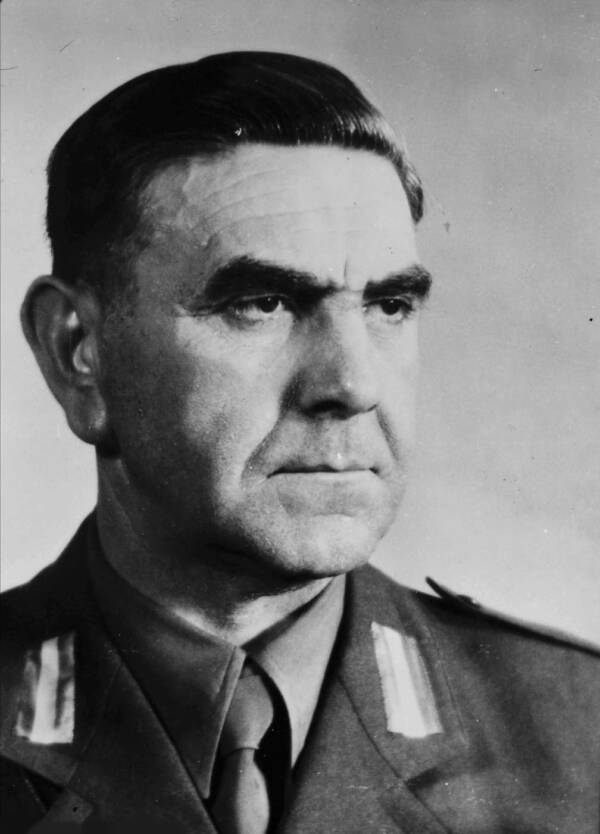
Wikimedia CommonsAn October 1942 photograph of Ustaše leader Ante Pavelic.
Based on a blend of Roman Catholicism and fascism, the group had no qualms about using genocide and terror to reach its ultimate goal of creating an independent and purely Croatian state free from Yugoslavian influence. As such, the group orchestrated several bombings and an attempt on the life of Croatia’s and Yugoslavia’s King Alexander, who was struggling to temper the tensions between Croatia and Serbia by unifying them under his crown.
Pavelic had fled to Italy to form the group covertly, but in 1929, the Yugoslavian court sentenced him to death in absentia. Pavelic was sentenced to death again in 1932, but he succeeded in assassinating King Alexander two years later. Under tremendous pressure from foreign protestors, Italy begrudgingly locked Pavelic up for 18 months.
Meanwhile, the Peasants’ Party made gains in the Yugoslav government and established friendly relations with both Fascist Italy and Nazi Germany, who knew that war loomed and wanted Yugoslavia as a neutral party.
The Peasants’ Party appeared less extremist than the Ustaše to the Nazis and their activities were even banned. Thus, the early Ustaše remained underground and largely blocked by even the far-right Axis governments.
Pavelic’s Exile

Wikimedia CommonsUstaše Black Legion Troops.
Even while he was in prison, Pavelic was making progress on his nationalist Ustaše revolution. The Italians allowed him virtually unlimited contact with the outside world, which he used to direct terrorist activity inside Yugoslavia.
In 1935, a Croat nationalist party rose to power, which Pavelic felt justified in taking credit for. When he was released in March 1936, still finding Italy’s official relationship with his movement chilly, Pavelic traveled to Germany and made efforts to win the support of Hitler himself.
As part of the process, the German Foreign Office asked him to draft a statement of his beliefs to gauge how close he was to the Nazis ideologically. In his statement, Pavelic wrote:
“Today almost all banking and almost all trade in Croatia is in the hands of the Jews…All the press in Croatia is in Jewish hands. This Jewish Freemason press is constantly attacking Germany, the German people and National Socialism.”
Meanwhile, at the University of Zagreb, an Ustaše-based student group become the largest single student group on campus.
“All enemies,” Pavelic vociferated, “all Serbs, Jews, and Gypsies, should be slaughtered.”
But he was too radical even for Hitler, who wanted the Balkan states to remain neutral allies to his regime. As such, Pavelic was forced to take the Ustaše underground under the surveillance of the Benito Mussolino and the Italians.
The Invasion Of Yugoslavia
On March 25, 1941, a vaguely nationalist Yugoslavian government signed a treaty with Italy and Germany to remain neutral, but two days later, that government was overthrown by pro-British Serbs which then triggered a German invasion.
In response, Benito Mussolini summoned Pavelic to help salvage the situation. After reaching terms, Mussolini ordered that the Ustaše men he’d been holding in internment be outfitted with rifles and surplus uniforms and sent to Yugoslavia.
On April 6, the Nazis invaded Yugoslavia. Although they preferred to install a puppet government that had the public’s support, the popular Croatian political leader Vladko Maček refused to collaborate.
So, they had no choice but to install Pavelic as the leader of the new Independent State of Croatia.

Wikimedia CommonsA depiction of Greater Croatia, the state the Ustaše wanted to create. Like Hitler, Pavelic argued for a pure Croatia inhabited by his preferred ethnic group – the Croats.
Later that same month, on April 28, 1941, the head of the Catholic Church in Croatia issued a public letter in support for the new Ustaše state. It explicitly praised its leader, Ante Pavelic.
The Ustaše Reign Of Terror
Pavelic and the Ustaše wasted no time settling scores all over the country. Within days of taking power, he signed a decree “Protecting Croatian National Property” that nullified contracts with Jews.
A few days later, he signed another decree that gave the Ustaše power to impose immediate execution on anyone found “harming national interests” that could include being Jewish or Serbian.
Immediately after that, the Ustaše passed an “economic reform” package that eliminated state and local governments and effectively turned tens of thousands of Serbs and Jews who had worked in local politics into jobless refugees.
They were then rounded up as “parasites” and sent to a newly established concentration camp called Jasenovac. From this camp alone, some 12,000 to 20,000 Jews were murdered.
The Ustaše, together with Croat authorities, would kill between 320,000 and 340,000 ethnic Serbs in Croatia and Bosnia-Herzegovina between in just one year between 1941 and 1942.
It was reported that the Ustaše “went raging mad.”

Wikimedia CommonsUstaše member shows off the “Serbkiller,” a knife used to quickly kill inmates at Jasenovac concentration camp.
Ethnic Repression
Pavelic wasn’t done yet. The philosophy of the Ustaše was violently pro-Croatian the way the Nazis were pro-German, but they were based in strict Roman Catholic values, too.
As such, Bosnian Muslims were tolerated on the grounds that their religion “kept the Croat bloodline pure,” while Jews who converted to Catholicism were allowed to claim “honorary Croatian” status.
Unconverted Jews, however, along with Orthodox Serbs, were considered enemies of the state. Communists and partisans of all political, religious, and ethnic stripes were considered as such as well.
By the end of 1941, the Ustaše had rounded up and shot, strangled, or beaten to death perhaps 100,000 of these people.
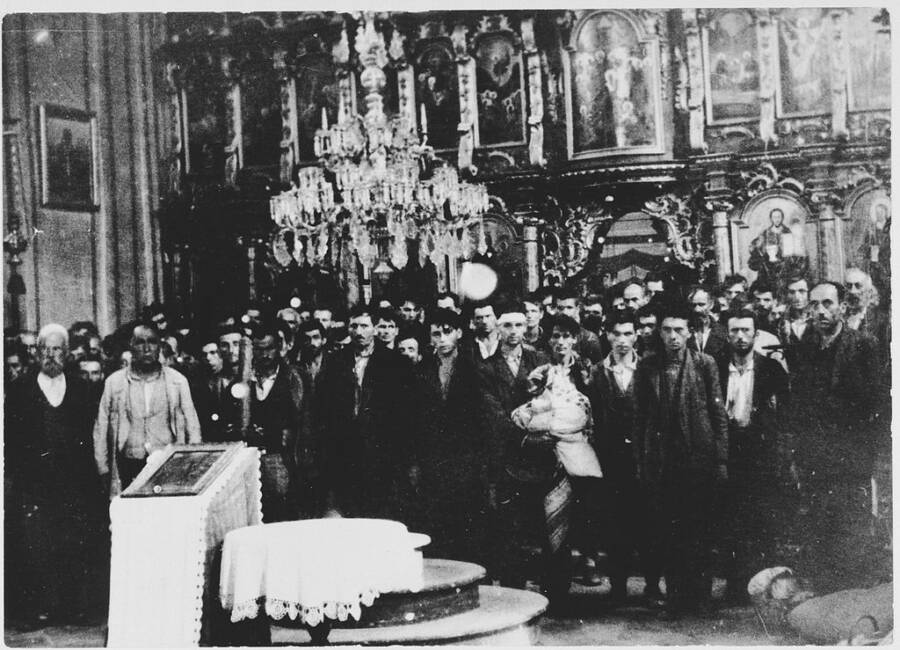
Wikimedia CommonsThe Ustaše forcefully converting Serbs to Roman Catholicism.
“Serbian and Jewish men, women and children were literally hacked to death,” historian Jonathan Steinberg wrote. “Whole villages were razed to the ground…There is in the Italian Foreign Ministry archive a collection of photographs of the butcher knives, hooks, and axes used to chop up Serbian victims. There are photographs of Serb women with breasts hacked off by pocket knives, men with eyes gouged out, emasculated, and mutilated.”
At the same time, the Ustaše began brought in groups of honorary Croats and gave them homes and land formerly owned by Serbs.
Everybody in the country who even looked like a communist was killed or interned in a labor camp, while the police and judges who had previously harassed Ustaše members disappeared overnight.
Nazi Complaints Of Brutality
During this time, the Ustaše government had foreign support. The Axis governments had gradually warmed to Pavelic, especially after he ceded Croatian territory to Mussolini who had insisted on these concessions as part of Italy’s recognition of Greater Croatia.

Wikimedia CommonsAnte Pavelic meeting Adolf Hitler in 1941.
The Germans still didn’t entirely trust the Croatians, however, and so the German Foreign Office and the SS attached observers to Pavelic’s office under the guise of keeping communications open. Their real job, however, was to spy on Pavelic and report back to Berlin.
In that capacity, General Glaise von Horstenau, the German High Command’s observer, complained to his superiors about the demoralizing effects of working with the Ustaše.
His report detailed atrocities such as floggings and executions carried out on Serbs that left his officers speechless. The general complained about having to be a “mute witness” to the cleansing going on in Sarajevo and Zagreb.
Things got so bad that an attaché for the Gestapo — the Nazi secret police known for its own brutality — wrote to SS leader Himmler:
“The Ustaše committed their deeds in a bestial manner not only against males of conscript age, but especially against helpless old people, women, and children. The number of the Orthodox that the Croats have massacred and sadistically tortured to death is about three hundred thousand.”
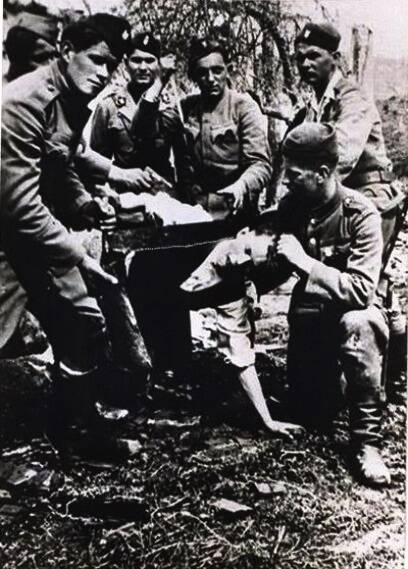
Wikimedia CommonsA group of Ustaše troops preparing to saw off the head of a Serbian man. Such atrocities were commonplace.
However, as distasteful as they were, the Ustaše proved a valuable ally to the Germans in the war. Although Croatian units avoided fighting, for the most part, Ustaše troops excelled in behind-the-lines actions of rounding up and executing communists and Jews.
Children were blinded, their eyes gouged out, or hacked to death with shovels. Men were hung upside-down and castrated before strangled or mauled by dogs.
Some units allied with the Axis powers, such as Franco’s Spanish volunteers, even asked to be assigned to a fighting front near Leningrad to get away from service near the Ustaše death squads.
Hell To Pay
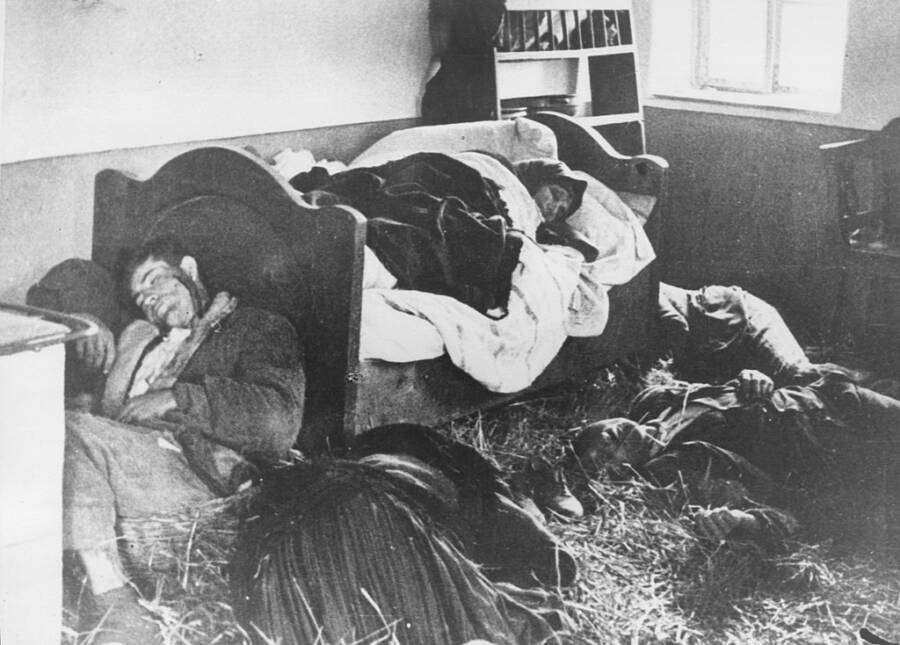
Wikimedia CommonsA Serbian family slaughtered by the Ustaše in their home.
By the end of the war, an estimated 30,000 Jews, 29,000 Romani, and between 300,000 and 600,000 Serbs had been slaughtered by the Ustaše.
This was on top of the usual shootings and deportations in the dead of winter that the Ustaše used as supplemental methods.
It goes without saying that Ustaše commanders were on the Soviets’ to-do list as the war wrapped up. In 1943, Mussolini was overthrown in a palace coup by the King of Italy and several Fascist deputies.
As the zone of German control shrank, the Ustaše found itself scrambling for a safe haven.
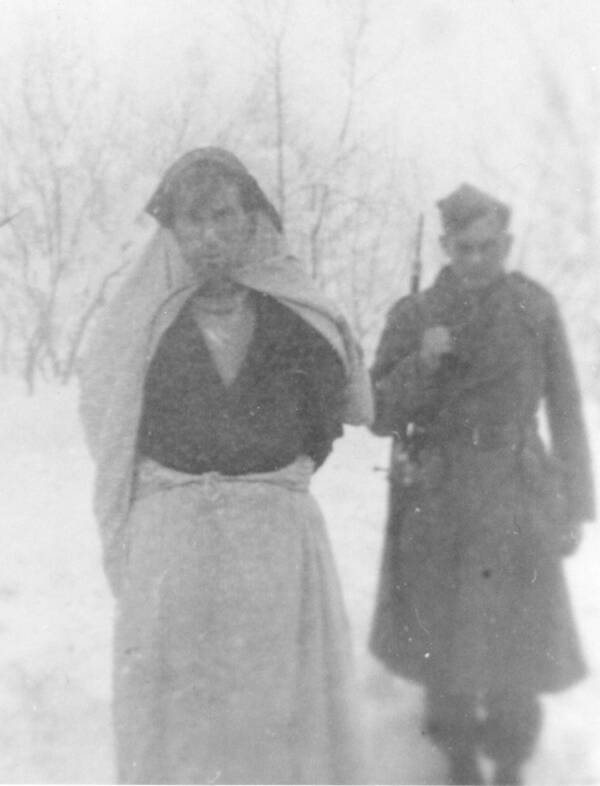
Wikimedia CommonsAn Ustaše soldier disguised as a woman who was captured by a partisan near the end of World War II.
The Ustaše fought their last European battle in World War II on May 9, 1945, against partisans near the Austrian border, after which the entire force withdrew in an effort to find British units to surrender to.
The British, who had heard more than they would have liked about Ustaše activities refused the surrender and told the men to go and give themselves up to the predominantly Serbian partisans.
A total of 40,000 Ustaše members did just that, whereupon the partisans machinegunned every single one of them and tossed their corpses into a ditch.
However, the Ustaše’s leader Ante Pavelic was not found among the bodies.
The Vatican Extends A Helping Hand
Citing their Roman Catholic faith, Pavelic and his senior officers appealed to the Vatican for help. Shockingly, despite all their atrocities, the Catholic Church obliged. Using clerical passports, the escaped Ustaše men made it all the way to Argentina along the infamous German “Rat Line.”

Wikimedia CommonsAnte Pavelic shakes hands with Alojzije Stepinac, Croatia’s Roman Catholic Archbishop.
There, Ante Pavelic lived peacefully under the protection of the Peron regime until 1957, when a Serb partisan caught up with him and shot Pavelic several times in the stomach.
Pavelic survived, but Argentina was no longer safe for him, so he moved to Spain. Suffering from uncontrolled diabetes with his wounds still unhealed, former Ustaše leader Ante Pavelic died in bed in 1959 at age 70.
For a man that even the Nazis felt had gone too far, it was perhaps too easy of a death.
Potential Resurgence
Following World War II, the Ustaše splintered in various factions, not unified under a single leader. The Croats would not claim their own state outside of Yugoslavia until 1991. During this time, another wave of young Nationalists arose, and among them was future culture minister of Croatia, Zlatko Hasanbegovic.
Hasanbegovic is among the extreme rightists of the country’s mainstream Croatian National Community, or HDZ. He was eventually elected by the HDZ in 2016 after the party took the majority in 2015.
He has since publically praised nationalist documentaries that callously downplay the tragedies and casualties endured at the Jasenovac concentration camp.
“Such films are useful because they speak about a number of taboo topics. This is the best way to finally shed light on a number of controversial places in Croatian history,” Hasanbegovic said.
He since formed a new, independent party in Croatian politics, which split recently.
What is to become of Croatian politics from here is anyone’s guess, but the hope is that a group like the Ustaše does not again rear its head.
After learning about the Ustaše, take a glimpse at the heartbreaking suffering of the Holocaust. Then, read about the “perfect Aryan child” used by Nazi propaganda.






